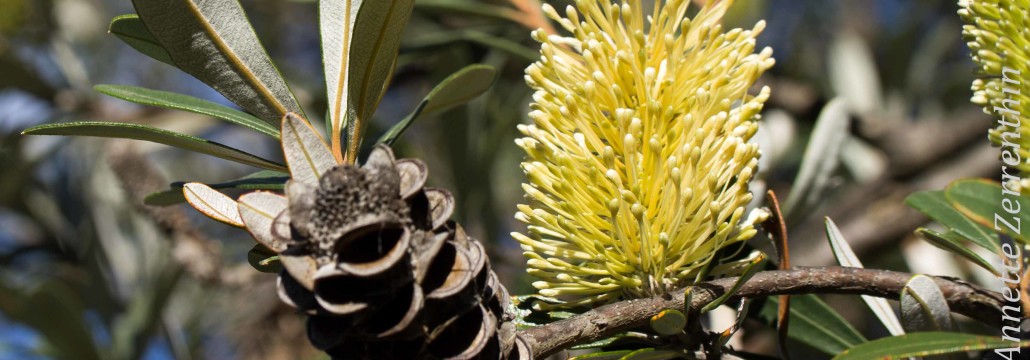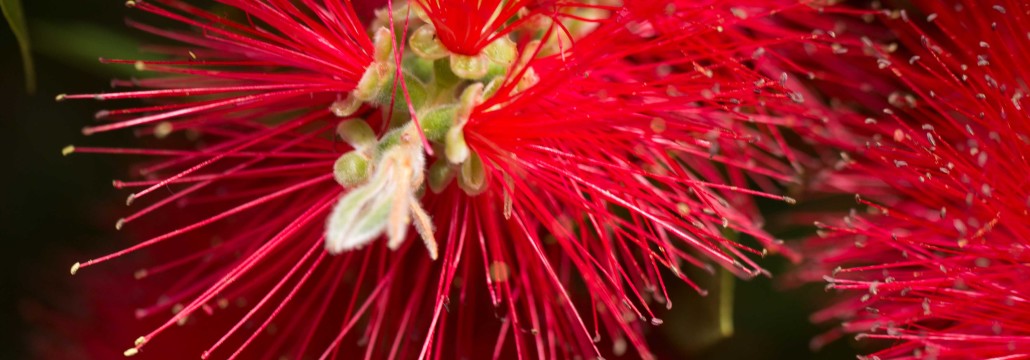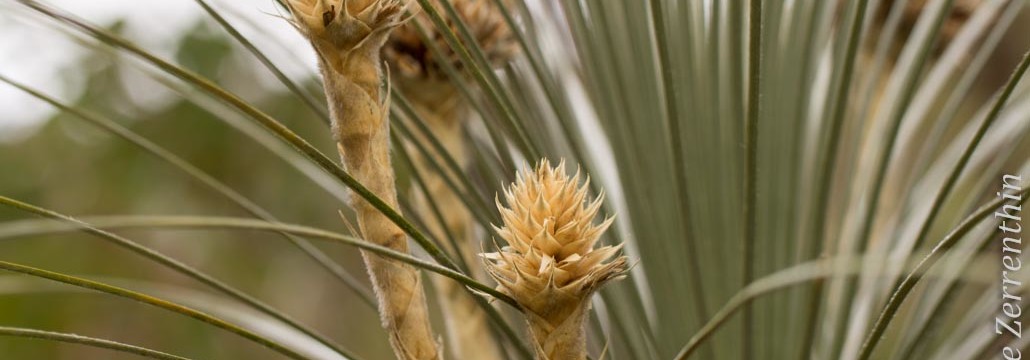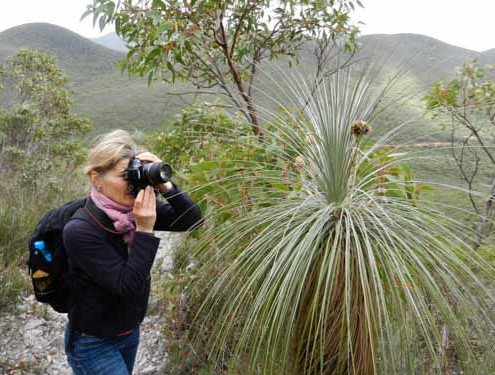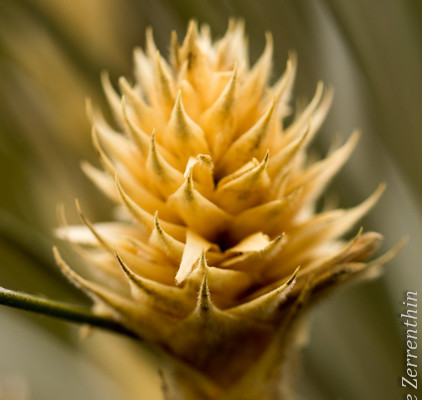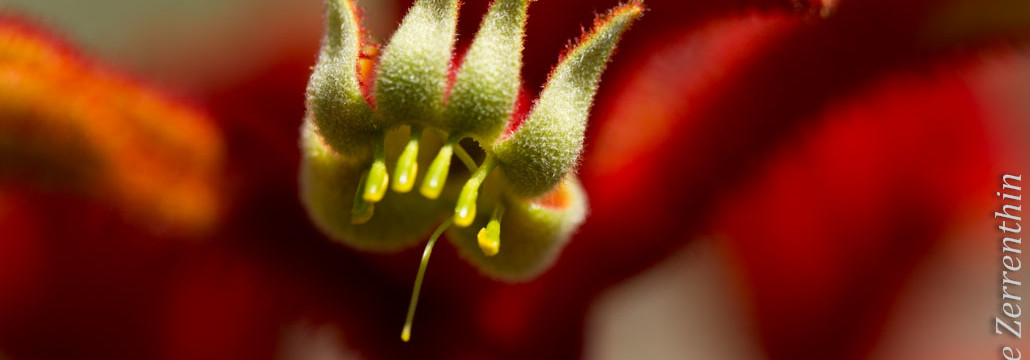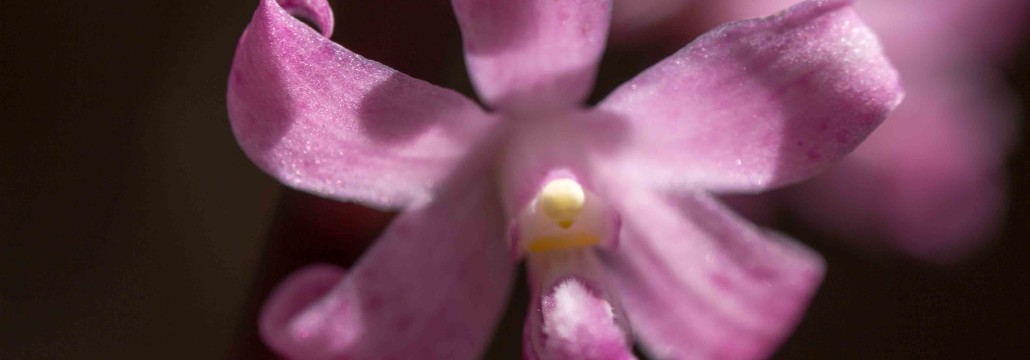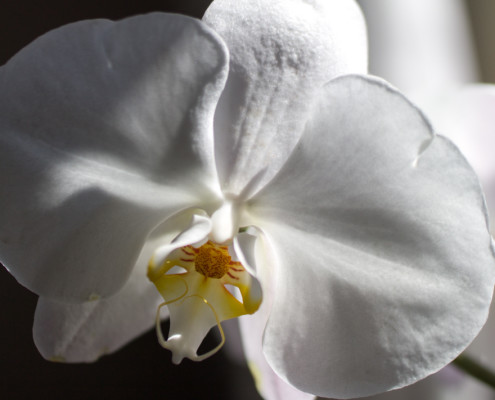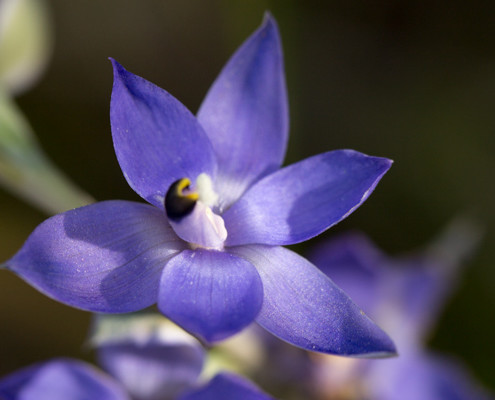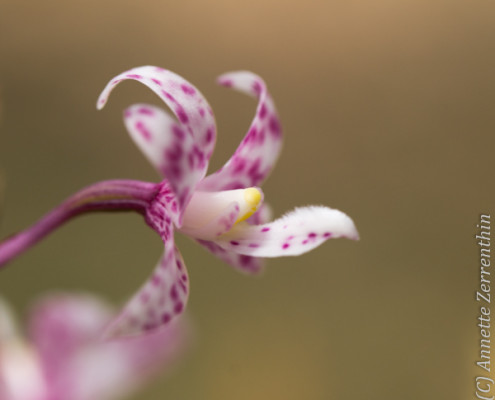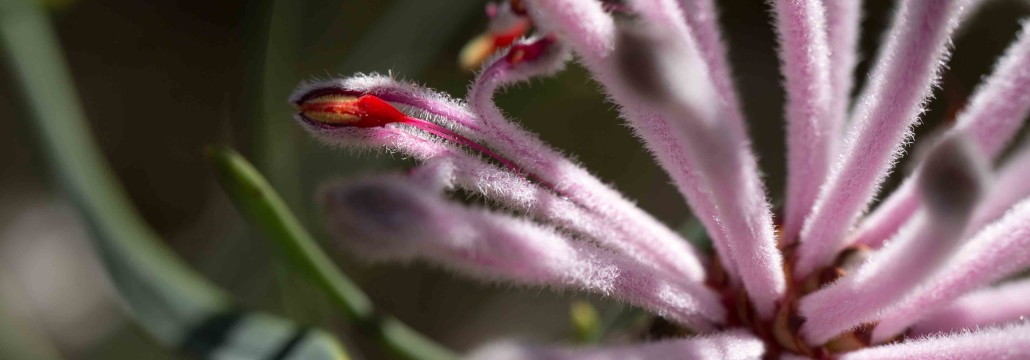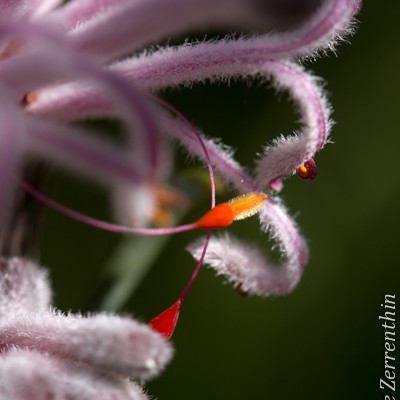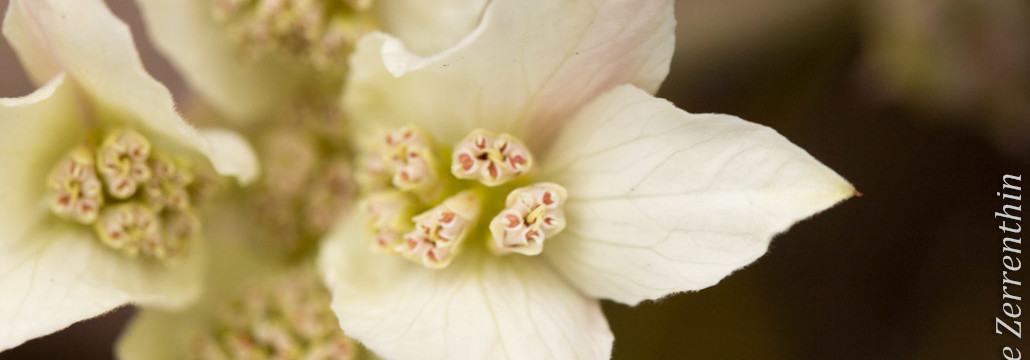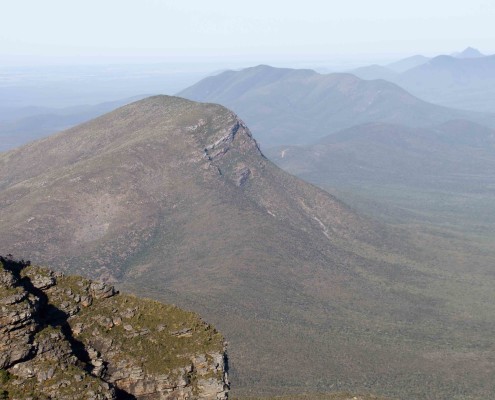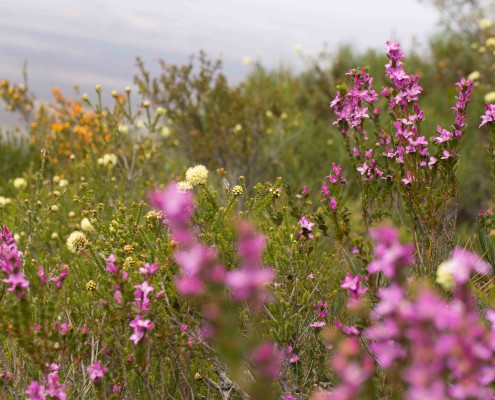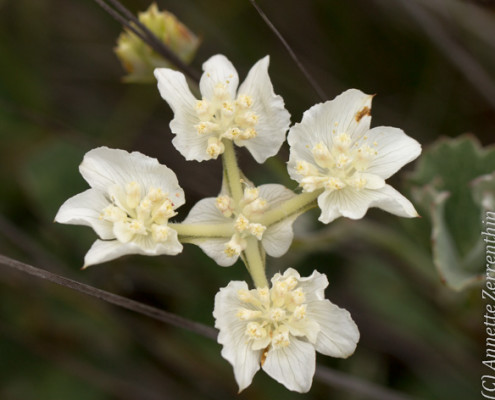On Bottlebrush
Bottlebrush is one of the plant genera that signify the Australian landscape along Eucalyptus, Acacia and Grevillia. Belonging to the Myrtaceae family there are two species that use the common name Bottlebrush, Callistemon (with 35 – 40 species) and Beaufortia (18 species). The latter are endemic to south-western Australia, while Callistemon can be found throughout temperate and subtropical regions of Australia.
Beaufortia are named after the botanical patron Duchess of Beaufort. As I had some Beaufortia images on file that I photographed in the Stirling Range National Park I thought to post them here, even though the Bottlebrush flower essences are made from two of the Callistemon species.
Beaufortia decussata | Gravel Bottlebrush
Beaufortia schaueri | Pink Bottlebrush
Beaufortia squarrosa | Sand Bottlebrush
The flower spikes of bottlebrushes form in Spring and Summer. The long prominent stamens make up the dense cylindrical spikes while the petals of the flower are almost hidden at the base.
The name Callistemon is derived from the Greek – kallistos, most beautiful and stema, a stamen.
Australian Bushflower Essences and Living Essences of Australia both offer a bottlebrush essence in their range with different harmonising qualities.
Living Essences of Australia’s Queensland Bottlebrush (Callistemon polandi) essence is entitled ‘The Sociable Spirit’ and brings about the enjoyment of fellow human beings. It is for those people who see only the benefits they can get from others and have the tendency to withdraw when they are being asked to contribute.
It helps people who feel physically, emotionally or mentally overwhelmed when in the company of others or for those, that have been taken advantage of by others and feel unsettled when in company.
‘The healing brings an internal focus where the person maintains a social projection of themselves which is true to themselves and is assertive enough to establish a balanced rapport with others. There is then an energy balance not an energy drain.’
As we let our light shine, we unconsciously give other people permission to do the same. As we are liberated from our own fear, our presence actually liberates others. ~ Marianne Williamson
The ABFE Bottlebrush (Callistemon linearis) essence has the harmonising qualities of serenity and calm, the abilities to cope and move on relating to dealing with major life changes such as old age, adolescence, parenthood, pregnancy or approaching death. This essence assists the person resisting change to let go of the old.
When I let go of what I am, I become what I might be. When I let go of what I have, I receive what I need. ~Tao Te Ching
When I use the essence in my clinic sessions the first that often comes to mind is its connection with the large intestine meridian. In Chinese medicine theory the large intestine meridian is associated with letting go of believes, habits or emotions that don’t serve one any longer. Here the Bottlebrush essence quite literally assists in this process of elimination. It helps to brush away the past and allows a person to move on to new situations and experiences.
References:
I. White. Australian Bush Flower Essences. Bantam, 1991.
I. White. Australian Bush Flower Healing. Bantam, 1999.
V. & K. Barnao. Australian Flower Essences for the 21st Century. Australian Flower Essence Academy, 1997.
D. Greig. Field Guide to Australian Wildflowers. New Holland, 2012.
G. Bryant. Australian Native Plants. Random House Australia, 2005.
© Annette Zerrenthin, 2013.
Grass Tree – ‘The Strength of the Patient Heroine’
Did you know that Australia has two genera of grass trees which interestingly bear distinct ‘male’ and ‘female’ features?
The Xanthorrhoea genus has a long spiked flower head while Kingia features egg-shaped clusters of flowers. Initially they were thought to be ‘male’ and ‘female’ species of the same plant as they bear superficial similarities when not in flower. Apart from the striking difference in their flower heads ‘Kingia and Xanthorrhoea are biologically quite distinct and are not closely related. For example, Xanthorrhoea have a secondary thickening meristem in the trunk (Dracaenoid secondary thickening meristem), whereas Kingia lack this feature.’ (Wikipedia)
I will write on Kingia today as the kind folks from Living Essences of Australia have made a flower essence from this uniquely Australian plant. Kingia is a genus of one species, Kingia australis, that is endemic to south-western Australia. Kingias can grow up to 8 meters in height and they do so incredibly slowly, up to 1 1/2 cm pro year or about 1m in a century.
So, this specimen I’m standing next to in the Stirling Range is about 100+ years old.
Considering this slow growth, the makers of Goddess Grasstree flower essence aptly entitled the description of its qualities with ‘The Strength of the Patient Heroine’.
“For the maturing of the female principle or woman within. For both men and women a metamorphosis to inner strength, nurturing sensitivity, patience and loving wisdom that is not emotionally dependent. Helpful in releasing the feminine aspect into society.”
The feminine values are the fountain of bliss.
Know the masculine, Keep to the feminine. ~ Lao Tzu
The essence is used for physical imbalances of menstrual abnormalities and female hormone imbalances. These healing properties are similar to the Australian Bush Flower Essence She Oak.
For mind and emotions it can be used to support people with an underactive unbalanced feminine aspect who are unable to bring out their nurturing, compassionate or patient side or when it is overactive, tend to resort only to their emotions to deal with relationships.
The harmonising qualities of this essence are: mature, nurturing, patient, supportive and unconditional love.
References: V. & K. Barnao. Australian Flower Essences for the 21st Century. Australian Flower Essence Academy, Perth, 1997. G. Bryant. Australian Native Plants. Random House Australia, 2003. M.G. Corrick, B. A. Fuhrer. Wildflowers of Southern Western Australia. Rosenberg, 2009.
© 2013. Annette Zerrenthin
On Kangaroo Paw
In Australia, you can find Kangaroo Paws (Anigozanthos) growing in many native gardens, parks and are offered as cut flowers in florists. Their natural habitat is the south-western region of Western Australia where you can see most of the 7 genera and 85 species in their natural habitat.
The first European to describe the flower was the French botanist Jacques-Julian Houton de Labillardiere, who as part of a scientific expedition, landed near Esperance WA in 1792. It was de Labillardiere who coined the species name Anigozanthos meaning ‘irregular flower’. The common name Kangaroo Paw stems from the appearance of the unopened flower clusters resembling the forepaw of a kangaroo.
The most known of this family is the striking Red and Green Kangaroo Paw (Anigozanthos manglesii) proclaimed as the floral emblem of Western Australia in 1960.
Kangaroo Paw flower essences made from Red and Green Kangaroo Paw (Anigozanthos manglesii) are available through the Australian Bush Flower Essence as well as the Living Essences of Australia ranges.
This essence supports relationships either for people who are socially awkward or family members who have grown distant. The essence is indicated for the socially inept person who has difficulty relating to others, either because of being a bit naive, narrow minded or feeling out of place in social circumstances. It’s for the person who always knows the right thing to say after the situation has passed.
Living Essences of Australia describes the ‘Healing Pathway to the Soul’ for this essence as follows:
‘The mind races towards its personal goals and desires, expecting support and devaluing those people who don’t support them directly. This devalued person can be one who simply wants to share Love with us. Just to BE is an art in life where the mind learns to sublimate its endless external plans and curiosities to the real experiences of the internal world. One of these internal delicacies that can easily be missed is the timeless communion with another Soul and all the sweetness of the combining of two hearts.’
The harmonising qualities of this essence are: kindness, sensitivity, enjoyment of people, closeness, being relaxed, in touch and patient.
A relationship is like a garden. If it is to thrive it must be watered regularly. Special care must be given, taking into account the seasons as well as any unpredictable weather. New seeds must be sown and weeds must be pulled …
~ John Gray
Living Essences of Australia also makes an essence from Purple and Red Kangaroo Paw. This essence is also indicated for relationship problems with focus on situations when we feel hung up communicating with a particular person … having to blame, argue, criticise and or react to the person. Taking is essence assists in shifting the problem into the spotlight and away from the other person. ‘Being in touch with the other person and not focusing on winning a fight, or having their own way, many new possibilities arise to renew the relationship.’
The harmonising qualities of Purple and Red Kangaroo Paw are: openness, sensitivity, understanding and vulnerability.
© 2013. Annette Zerrenthin
References: Ian White: Australian Bush Flower Essences. Bantam Books, 1991. Vasudeva & Kadambii Barnao. Australian Flower Essences for the 21st Century. Australasian Flower Essence Academy, 1997. Geoff Bryant. Australian Native Plants. Random House Australia, 1995. Andy Zubko. Treasury of Spiritual Wisdom. Motilal Banarsidass Publishers,2004.
… for the Lover of Orchids
Have you ever considered the sheer abundance and diversity of flowers? Internet sources tell me that flowering plants make up about 90% of the plant kingdom with more than 250,000 species being documented and many still being unidentified.
“Flowers have spoken to me more than I can tell in written words. They are the hieroglyphics of angels, loved by all men for the beauty of their character, though few can decipher even fragments of their meaning.” ~Lydia M. Child
The Orchidaceae family is one of the largest groups of flowering plants in the world with around 800 genera and 30,000 species found on all continents except Antarctica. In Australia, there are about 100 genera and more than 1,200 species of orchids. Orchids get their name from the Ancient Greek orchis , meaning ‘testicle’, derived from the appearance of the paired root tubers of the plant.
Commonly, when we think of orchids it is those with large blooms we can buy at florists or see in the hothouses of botanic gardens.
Phalaenopsis aphrodite from my local market in Melbourne
Yet, we may pass them when bush walking and not notice them, perhaps because we expect to see large beautiful flowers calling for our attention.
Australian native orchids are diverse and stunning but have much smaller flowers, they often blend well into their environment making them hard to see when we don’t know what to look out for.
Blue Lady Orchid (Thelymitra crinita) – Porongurup National Park, WA
Expecting them to be much larger and prominent I saw native orchids for the first time when visiting the Porongurup National Park in Western Australia in October last year and with my eyes being attuned to their fragility I found them growing beside a path on a walk surrounding Hanging Rock in Victoria last December.
Hyacinth Orchid (Dipodium punctuatum) – Hanging Rock, Victoria
Some of the Australian native orchids have been made into flower essences by Living Essences of Australia and the Australian Bush Flower Essences.
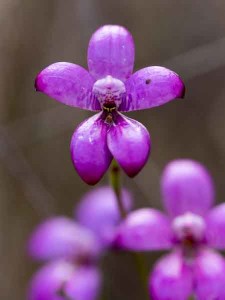 The Living Essences of Australia range has 13 essences that are made from native orchids. Purple Enamel Orchid (Elynthranthera brunonis) flower essence for example supports us in balancing our energies. It is indicated for those, who feel they are not doing enough, having a tendency to overwork. Their lifestyle fluctuates between a high energy output and then collapsing having expended too much energy. The harmonising qualities for this essence are consistence, confidence, regulating Qi, stamina and achievement.
The Living Essences of Australia range has 13 essences that are made from native orchids. Purple Enamel Orchid (Elynthranthera brunonis) flower essence for example supports us in balancing our energies. It is indicated for those, who feel they are not doing enough, having a tendency to overwork. Their lifestyle fluctuates between a high energy output and then collapsing having expended too much energy. The harmonising qualities for this essence are consistence, confidence, regulating Qi, stamina and achievement.
Cowslip Orchid (Calandenia flavia) is supporting a person that craves acknowledgement and when not recognised by others, has a tendency to respond negatively. The essence is indicated when the mind of the person is drawn too quickly away from their body onto their surroundings, they are too externally concentrated and overly alert. The harmonising qualities of the essence are humility, confidence, being self-assured and having inner satisfaction.
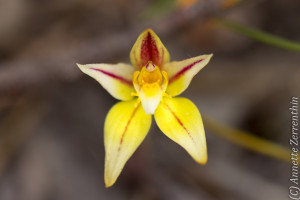 Yellow Cowslip Orchid essence is part of the Australian Bush Flower Essence range and is indicated for a person with an overactive mind and as a result this person may be blocked off from their feelings. Out of balance there is a tendency to be excessively critical and judgemental, aloof and withdrawn. ABFE indicates these positive qualities for the essence: humanitarian concern, impartial – can step back from emotions, constructive and ability to arbitrate. This essence is included in the Dynamis combination essence supporting a renewal of enthusiasm and joy for life.
Yellow Cowslip Orchid essence is part of the Australian Bush Flower Essence range and is indicated for a person with an overactive mind and as a result this person may be blocked off from their feelings. Out of balance there is a tendency to be excessively critical and judgemental, aloof and withdrawn. ABFE indicates these positive qualities for the essence: humanitarian concern, impartial – can step back from emotions, constructive and ability to arbitrate. This essence is included in the Dynamis combination essence supporting a renewal of enthusiasm and joy for life.
Living Tree Orchid Essences is a range entirely dedicated to orchids grown in greenhouses and made in the UK by Don Dennis and Heather Decam.
© 2013. Annette Zerrenthin
Pixie Mops – Feel the warm embrace to your heart
When I look at Pixie Mops (Petrophile linearis) I feel a warm embrace of my heart. Its downy flower curling around into a soft violet pink cocoon. When first seeing the flower this October at Perth’s Kings Park I was stuck in awe by its unusual form and colour highlighted by the bright midday sun.
And indeed, Pixie Mops flower essence from the Living Essences of Australia range works with the heart, gives it strength and freedom. It supports you when you feel let down or treated unfairly by people; triggering a hardening of your heart, being resentful and hurt in response. It restores within you sensitivity and compassion towards others, allowing you to cut emotional ties that keep you stuck in resentment.
“When you hold resentment toward another, you are bound to that person or condition by an emotional link that is stronger than steel. Forgiveness is the only way to dissolve that link and get free.” ~ Catherine Ponder
The species name Petrophile stems from the Greek petra (rock) and phileo (love), as they were thought to be ‘rock loving’ plants when first described. They are commonly known as Conesticks. Currently 53 species of the shrub that are endemic to Australia have been identified with 47 of them originating in the south-west of Western Australia. The often very downy to woolly flowers form into woody seedheads, referred to as cones. Petrophile linearis, Pixie Mops, is endemic to coastal regions of Western Australia.
© 2013. Annette Zerrenthin
Meeting Southern Cross in the Stirling Range
In October, a long time wish came true to visit and walk the Stirling Range National Park which is located about 340 km south-east of Perth, Western Australia.
The Aboriginal name for the range, Koi Kyenunu-ruff, means ‘mist moving around the mountains’.
The Stirling Range is internationally recognised as one of the world’s 34 hotspots for biodiversity. This biodiversity is a result of the multitude of conditions of this landscape with mountain peaks, sheltered valleys, windswept lowlands and moist gullies. The Stirlings are home to more than 1,500 species of flowering plants and 80 of those only exist in the range.
My heart jumped with delight when seeing the multitude of wild flowers during my visit in the height of the Spring wild flower season. Sometimes I come face to face with flowers that I’d been studying and using as a flower essence practitioner and these encounters are akin to meeting someone in person you have known for a while but never met.
Here in the Stirling Range I met up with Southern Cross.
Southern Cross (Xanthosia rotundifolia) is an herb from the large Apiaceae family that includes carrots, parsley and fennel. With about 20 species Xanthosia are endemic to Australia and 11 of those can only be found in Western Australia.
The common name Southern Cross comes from the resemblance of the flower to the constellation of the same name.
Southern Cross flower essence is available in the Australian Bush Flower Essence and the Living Essences of Australia ranges.
The essence from the Australian Bush Flower Essence range supports personal power, taking responsibility and being positive. It allows you to take responsibility for the circumstances you find yourself in instead of succumbing to a victim mentality and blaming the circumstances itself for your lack and misfortune in life.
The life we want is not merely the one we have chosen and made. It is the one we must be choosing and making. ~Wendell Berry
It also helps us opening up to the abundance around us, overcoming poverty consciousness.
Southern Cross flower essence from the Living Essences of Australia range supports positive aspects of acceptance, empathy, wisdom, understanding and awareness. It is indicated for being judgemental helping us to put ourselves into the shoes of others overcoming judgemental attitudes and short sightedness stemming from inexperience, arrogance or a sheltered life.
In summary, both essences deal with aspects of a belief that focuses on judgement of others either by shifting blame towards others and circumstances for our lack of achievement or by being judgemental due to a lack of understanding and short sightedness. They support us in taking responsibility for our lives and with this comes a feeling of having personal power which in turn allows for wisdom and empathy to blossom.
© 2013. Annette Zerrenthin

